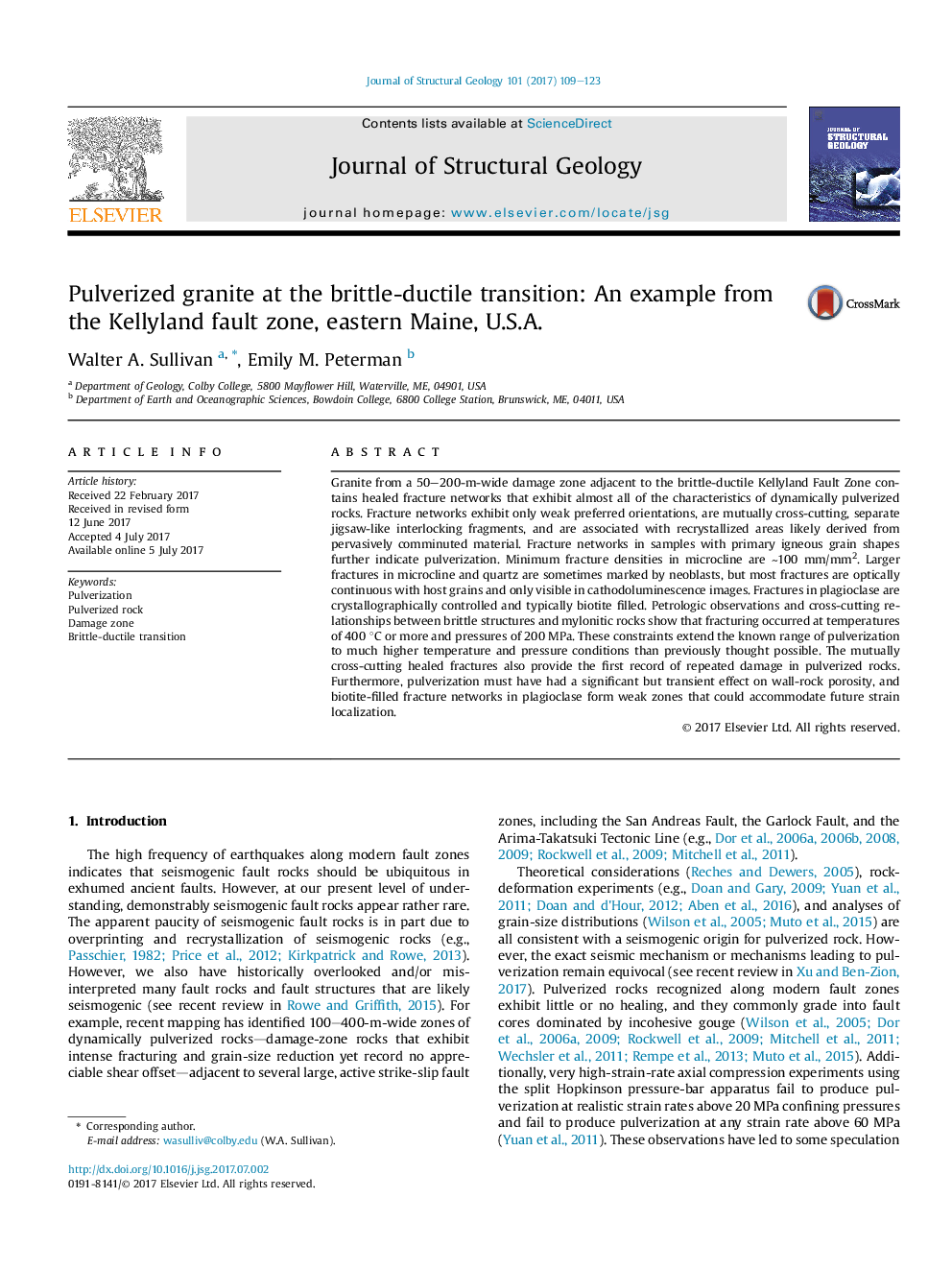| Article ID | Journal | Published Year | Pages | File Type |
|---|---|---|---|---|
| 5786293 | Journal of Structural Geology | 2017 | 15 Pages |
Abstract
Granite from a 50-200-m-wide damage zone adjacent to the brittle-ductile Kellyland Fault Zone contains healed fracture networks that exhibit almost all of the characteristics of dynamically pulverized rocks. Fracture networks exhibit only weak preferred orientations, are mutually cross-cutting, separate jigsaw-like interlocking fragments, and are associated with recrystallized areas likely derived from pervasively comminuted material. Fracture networks in samples with primary igneous grain shapes further indicate pulverization. Minimum fracture densities in microcline are â¼100 mm/mm2. Larger fractures in microcline and quartz are sometimes marked by neoblasts, but most fractures are optically continuous with host grains and only visible in cathodoluminescence images. Fractures in plagioclase are crystallographically controlled and typically biotite filled. Petrologic observations and cross-cutting relationships between brittle structures and mylonitic rocks show that fracturing occurred at temperatures of 400 °C or more and pressures of 200 MPa. These constraints extend the known range of pulverization to much higher temperature and pressure conditions than previously thought possible. The mutually cross-cutting healed fractures also provide the first record of repeated damage in pulverized rocks. Furthermore, pulverization must have had a significant but transient effect on wall-rock porosity, and biotite-filled fracture networks in plagioclase form weak zones that could accommodate future strain localization.
Related Topics
Physical Sciences and Engineering
Earth and Planetary Sciences
Geology
Authors
Walter A. Sullivan, Emily M. Peterman,
